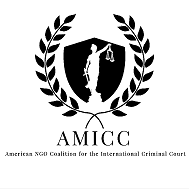Tuesday, October 11, 2016
An ICC Case Makes it Big with American Media
It wasn’t massacres or rapes or any violent atrocity that touched off the widest recent US media coverage of the International Criminal Court (ICC). It was the destruction of historic, cultural and religious sites in Timbuktu, Mali.
The PBS News Hour ran a substantial segment on the case complete with visuals of the trial. The Associated Press ran 11 paragraphs reprinted in at least five US newspapers across the country. The Washington Post ran both the AP story and an article of its own accompanied by photographs of the courtroom and of destruction scenes and so did the New York Times with analysis of the Mali case along with Palmyra and the Buddhist statues in Afghanistan. An article on the case as a story on culture appeared in Fusion online magazine. Justice and redress for victims was the focus of a column in The Huffington Post. Three straight news articles and programs with photographs of the accused appeared in the Voice of America.
He is Ahmad al-Faqi al-Mahdi, a former teacher who became a jihadist with Ansar Dine, a group linked to al-Qaeda. In his forties and the father of eight, Mahdi had a reputation as an Islamic scholar and an interpreter of shariah, Islamic law. After initial reluctance, he accepted and vigorously carried out an assignment to lead and direct the destruction of the sites.
Timbuktu, at the crossroads of traditional caravan routes, has for centuries been a center of Islamic scholarship and worship. UNESCO’s designation of these libraries and saints’ tombs as a World Heritage Site further confirmed the ICC’s conclusion that their destruction was a war crime that met the Court’s high standards of extreme seriousness. For the jihadists, these buildings represent a tradition in the historic Islamic community that they oppose.
When confronted with this charge and the prospect of 30 years in prison, he confessed and also urged Muslims everywhere not to follow his example. The Court cited his confession, remorse and cooperation with the prosecution as mitigation justifying a final sentence of nine years.
Why all this American media attention to this man and his bloodless crime? Among the Court’s cases of vile and disgusting atrocities, only the Darfur massacres of Sudan’s President Bashir and the abductions and recruitment of child soldiers by Joseph Kony of the Lord’s Resistance Army have had comparable coverage.
There are several answers. One starts with the man himself. We can react to a Congolese warlord, no matter how solemn and groomed he may be in the courtroom, only with horror and withdrawal. It is much easier to recognize as another human being the slight, scholarly and remorseful al-Mahdi. Similarly, photographs of mutilated victims, dead bodies, emaciated prisoners are sometimes too much to bear in mind, while men with sledgehammers and bulldozers knocking down buildings are much easier to envision and remember. Moreover, the uniqueness of such a case actually going to trial has brought strong positive attention to the Court. At the same time, the terrorism of al Qaeda and ISIS continue to be front-page news.
So this case is likely to help the ICC, and our advocacy for it, as much or more than its trials of acts of slaughter and genocide. In the United States this case will appeal to preservationists and may serve as a model for domestic cases. More generally, it will be another of the cases that have been growing the legitimacy and credibility of the Court by engaging the awareness and approval of the American public and government.
Written by John Washburn
Subscribe to:
Posts (Atom)


